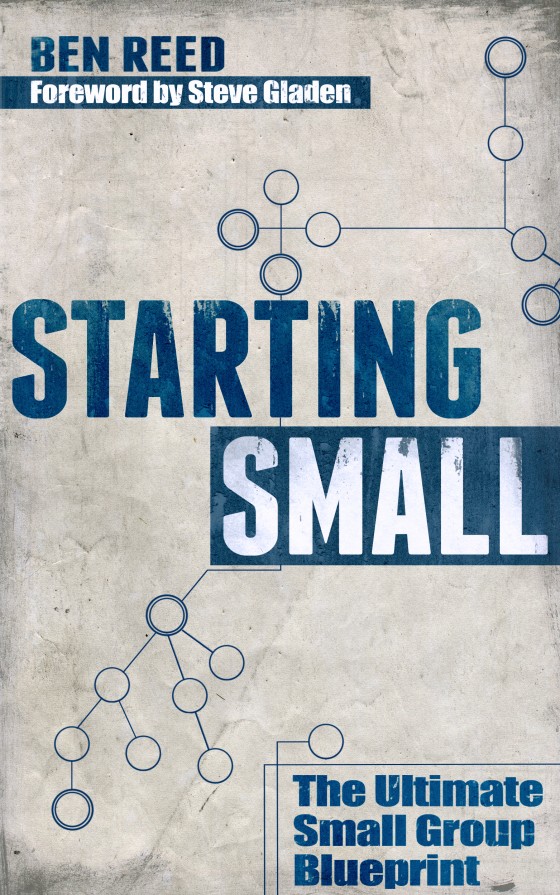John Mark is one of my good friends. I served on staff with him in Taylorsville, KY, for a little over a year. He still serves there, in a small church, in a hard place of KY. I am thankful for his faithful preaching of the Word and his belief that the Gospel changes lives. I am thankful for the investment that he made in me, and the risk that he took in bringing on a young seminary student to lead the student ministry for the church whom he served.
John Mark is a thinker, and I highly value my time when I get to connect with him. He helps me categorize difficult things, and make those difficult things seem…well, not so difficult. One thing that I love to do is read. I enjoy reading a broad variety of content, and so I often read books whose authors I disagree with. John Mark has written a review of Brian McLaren’s book, The Secret Message of Jesus, in which he fairly critiques McLaren’s worldview. He disagrees with McLaren, but I hope that you can see and appreciate how John Mark picks out the helpful content of the book, yet disagrees in a non-attacking way with the overall philosophy. I hope you find this helpful. To read more of John Mark’s thoughts, visit his blog at http://jmandlaura.blogspot.com. I’m going to post his review in two parts, so make sure to check back tomorrow for the rest of his review.
The Secret Message of Jesus by Brian McLaren, Review
The Secret Message of Jesus is Brian McLaren’s attempt to help people look at the message taught by the historical Jesus, so that people can then look through Jesus’ message to see how it can change everything (xviii). In the introduction, McLaren asks critical readers to keep in mind that he is not writing an exhaustive, technical, or even systematic book. Even so, I have tried to diagram the connection between the different chapters (each chapter seems to present one idea – sometimes two chapters present one idea together). I could not put all the pieces together until I drew it all with bubbles and arrows. I’ll describe my diagram as I go, but remember that McLaren does not endorse our graphic summary of his thought (He might disapprove of even trying to systematize his thought!).
Draw a target with at least three rings around the center. In the center is “the kingdom of God,” the major theme of Jesus’ teaching and his actions. In ch. 1 McLaren asks “troubling questions” that turn out to be modern implications and applications of that central theme; (Hint!) these areas would go just inside the outermost ring of your target diagram. His playful, original title tells you where he believes Jesus’ message will change everything: The Secret Message of Jesus: His Surprising and Largely Untried Plan for a Political, Social, Religious, Artistic, Economic, Intellectual, and Spiritual Revolution (4n1). The idea McLaren finds in Jesus’ teaching is something that could change our world today, giving “birth to a new world” (4) in our day and time. It is a realizable goal for the future derived from the Bible (=eschatology).
Draw arrows from the center to the words political, religious, and spiritual, because these three are the themes of ch. 2-4. McLaren says Jesus challenged the political & religious status quo of his day with his kingdom message. Jesus consciously fulfilled the storyline of the Bible, which addresses the problem of evil in the world (per McLaren) – a revolutionary, spiritual solution.

Write these phrases in the inner ring that touches the center: vague metaphors, parables, signs and wonders, and exorcisms; draw arrows from them into the center and label them interactive relationship; draw lines from them outward to the other two rings and label those arrows confrontation, reconciliation, and cross/pacifism. McLaren says Jesus’ ministry both exposed people to the kingdom of God – the inclusive movement he started – and actually did the work of that movement. “Jesus resists being clear or direct” (39), and he never explained the kingdom in clear terminology (51). Jesus’ vague words draw people into conversation with him, and his inclusive and wonderful actions clearly demonstrate what the kingdom community should do by confronting the status quo.

Write these phrases in the middle ring: disciples, Paul the Apostle, and expanding movement; draw arrows from this ring toward the middle and label them conversion and learning Jesus’ message; draw lines from the middle ring to the outer ring and label them different metaphors, new imagery for kingdom, prayer, longing, conversations, and realizable success. Paul in particular translated Jesus’ message into new figures of speech, but McLaren does not agree with scholars who think Paul started a different movement from Jesus. The disciples continue Jesus’ movement by picking fresh illustrations, by including anyone who is willing to radically rethink his/her life according to Jesus’ teaching, and by nonviolently confronting the status quo.
Now write harvest = consummation around the outside of the outer ring. McLaren believes Jesus’ message about the kingdom of God is “a glorious present reality that expands into an even more glorious future” (183n1). This includes the resurrection and the establishment of “God’s domination-free order” (190, from Walter Wink’s The Powers That Be, 64). **You have completed the diagram!

A week ago a friend described a lecture by Brian McLaren that he recently attended. The crowd seemed to be largely favorable to McLaren’s view of Jesus (my friend was not among McLaren’s sympathizers), and my friend said one unsympathetic question toward the end did not receive a satisfying answer. How are we to relate to people with whom we have (sometimes serious) disagreements?
Check out the rest of John Mark’s review tomorrow!


Pingback: Part 2: Guest Post: A Review of McLaren’s “The Secret Message of Jesus” « Life and Theology()